Showing Spotlights 145 - 152 of 240 in category All (newest first):
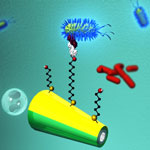 Early detection of food borne pathogenic bacteria is critical to prevent disease outbreaks and preserve public health. This has led to urgent demands to develop highly efficient strategies for isolating and detecting this microorganism in connection to food safety, medical diagnostics, water quality, and counter-terrorism. Conventional techniques to detect E. coli and other pathogenic bacteria are time-consuming, labor-intensive, and inadequate as they lack the ability to detect bacteria in real time. Thus, there is an urgent need for alternative platforms for the rapid, sensitive, reliable and simple isolation and detection pathogens. Taking a novel approach to isolating pathogenic bacteria from complex clinical, environmental and food samples, researchers have developed a nanomotor strategy that involves the movement of lectin-functionalized microengines. Receptor-functionalized nanoswimmers offer direct and rapid target isolation from raw biological samples without preparatory and washing steps.
Early detection of food borne pathogenic bacteria is critical to prevent disease outbreaks and preserve public health. This has led to urgent demands to develop highly efficient strategies for isolating and detecting this microorganism in connection to food safety, medical diagnostics, water quality, and counter-terrorism. Conventional techniques to detect E. coli and other pathogenic bacteria are time-consuming, labor-intensive, and inadequate as they lack the ability to detect bacteria in real time. Thus, there is an urgent need for alternative platforms for the rapid, sensitive, reliable and simple isolation and detection pathogens. Taking a novel approach to isolating pathogenic bacteria from complex clinical, environmental and food samples, researchers have developed a nanomotor strategy that involves the movement of lectin-functionalized microengines. Receptor-functionalized nanoswimmers offer direct and rapid target isolation from raw biological samples without preparatory and washing steps.
Dec 8th, 2011
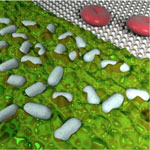 Surface-enhanced Raman spectroscopy (SERS) is a powerful research tool that is being used to detect and analyze chemicals as well as a non-invasive tool for imaging cells and detecting cancer. It also has been employed for label-free sensing of bacteria, exploiting its tremendous enhancement in the Raman signal. SERS can provide the vibrational spectrum of the molecules on the cell wall of a single bacterium in a few seconds. Such a spectrum is like the fingerprints of the molecules and therefore could be exploited as a means to quickly identify bacteria without the need of a time-consuming bacteria culture process, which typically takes a few days to several weeks depending on the species of bacteria. To practically apply SERS to the early diagnosis of bacteremia - the presence of bacteria in the blood - researchers have managed to capture bacteria in a patient's blood onto the SERS substrate.
Surface-enhanced Raman spectroscopy (SERS) is a powerful research tool that is being used to detect and analyze chemicals as well as a non-invasive tool for imaging cells and detecting cancer. It also has been employed for label-free sensing of bacteria, exploiting its tremendous enhancement in the Raman signal. SERS can provide the vibrational spectrum of the molecules on the cell wall of a single bacterium in a few seconds. Such a spectrum is like the fingerprints of the molecules and therefore could be exploited as a means to quickly identify bacteria without the need of a time-consuming bacteria culture process, which typically takes a few days to several weeks depending on the species of bacteria. To practically apply SERS to the early diagnosis of bacteremia - the presence of bacteria in the blood - researchers have managed to capture bacteria in a patient's blood onto the SERS substrate.
Nov 29th, 2011
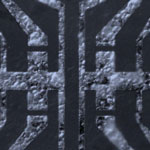 The integration of biological components with electronics, and more specifically, the interfacing of complex biological systems is one of the current challenges on the path towards bioelectronics (or bionics for short). Up to know, and due to its technology maturity, most of the work has been done based on Si-FET technology. However, there have been some issues related to this technology which prevented a more successful implementation into real applications. Researchers have now demonstrated, for the first time, that CVD grown graphene can be employed to fabricate arrays of transistors which are able to detect the electrical activity of electrogenic cells.
The integration of biological components with electronics, and more specifically, the interfacing of complex biological systems is one of the current challenges on the path towards bioelectronics (or bionics for short). Up to know, and due to its technology maturity, most of the work has been done based on Si-FET technology. However, there have been some issues related to this technology which prevented a more successful implementation into real applications. Researchers have now demonstrated, for the first time, that CVD grown graphene can be employed to fabricate arrays of transistors which are able to detect the electrical activity of electrogenic cells.
Nov 22nd, 2011
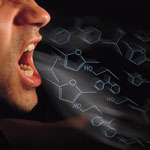 Breath analysis has been recognized as an increasingly accurate diagnostic method to link specific gaseous components in human breath to medical conditions and exposure to chemical compounds. Sampling breath is also much less invasive than testing blood, can be done very quickly, and creates as good as no biohazard waste. A recent review article in Environmental Science and Technology focuses on breath analysis as a tool for assessing environmental exposure and provides a good overview of the current state of diagnostic tools, leading studies in this field, and emerging technologies for hand-held breath analyzers. After describing the basics of breath analysis as a diagnostic tool, the authors discuss emerging chemical sensor technology ('electronic noses'), in particular two nanotechnology-based approaches, that are suitable to identify target analytes in breath.
Breath analysis has been recognized as an increasingly accurate diagnostic method to link specific gaseous components in human breath to medical conditions and exposure to chemical compounds. Sampling breath is also much less invasive than testing blood, can be done very quickly, and creates as good as no biohazard waste. A recent review article in Environmental Science and Technology focuses on breath analysis as a tool for assessing environmental exposure and provides a good overview of the current state of diagnostic tools, leading studies in this field, and emerging technologies for hand-held breath analyzers. After describing the basics of breath analysis as a diagnostic tool, the authors discuss emerging chemical sensor technology ('electronic noses'), in particular two nanotechnology-based approaches, that are suitable to identify target analytes in breath.
Oct 24th, 2011
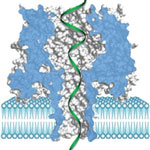 Every aspect of cellular activities, including cell proliferation, differentiation, metabolism and apoptosis, can be regulated by a class of tiny but very important nucleic acids fragments called microRNAs (miRNAs). They bind to specific messenger RNAs and cause messenger RNA degradation or inhibit translation, thereby regulate gene expression at the post-translational level. In cancer cells, the homeostasis of these normal biological processes is disrupted, partially by dysregulated miRNAs, therefore the level of microRNAs is an indicator to the disease development, and miRNAs in cancer tissues or biofluids can be utilized as a diagnostic biomarker for cancer detection. Now, researchers report a miRNAs-based discovery that could provide a much earlier warning signal for lung cancer.
Every aspect of cellular activities, including cell proliferation, differentiation, metabolism and apoptosis, can be regulated by a class of tiny but very important nucleic acids fragments called microRNAs (miRNAs). They bind to specific messenger RNAs and cause messenger RNA degradation or inhibit translation, thereby regulate gene expression at the post-translational level. In cancer cells, the homeostasis of these normal biological processes is disrupted, partially by dysregulated miRNAs, therefore the level of microRNAs is an indicator to the disease development, and miRNAs in cancer tissues or biofluids can be utilized as a diagnostic biomarker for cancer detection. Now, researchers report a miRNAs-based discovery that could provide a much earlier warning signal for lung cancer.
Sep 20th, 2011
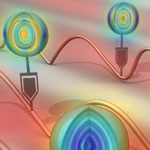 Most molecular probes used in biomedical research require dyes or fluorescence in order to obtain meaningful signals. These probes usually are quite limited with regard to the complexity of what they can image - be it the measurable concentration range or the number of molecules that can be simultaneously detected. This is an issue that is particularly relevant when it comes to track the simultaneous multiple molecular transformations that dictate complicated diseases like cancer. Scientists now have come up with an intriguing new class of molecular probes to solve this problem. They took an existing spectroscopic technique - surface-enhanced Raman scattering (SERS) - and developed a unique class of nanoparticle labels that provide for different responses when excited by laser light.
Most molecular probes used in biomedical research require dyes or fluorescence in order to obtain meaningful signals. These probes usually are quite limited with regard to the complexity of what they can image - be it the measurable concentration range or the number of molecules that can be simultaneously detected. This is an issue that is particularly relevant when it comes to track the simultaneous multiple molecular transformations that dictate complicated diseases like cancer. Scientists now have come up with an intriguing new class of molecular probes to solve this problem. They took an existing spectroscopic technique - surface-enhanced Raman scattering (SERS) - and developed a unique class of nanoparticle labels that provide for different responses when excited by laser light.
Aug 30th, 2011
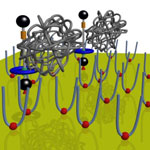 Previously, synthetic molecular machines have been used to perform mechanical tasks collectively, such as move liquid droplets uphill against the force of gravity, rotate microscale objects using liquid crystals doped with synthetic motor-molecules, and bend cantilevers. However, all these tasks are achieved by the collective action of billions and billions of molecular machines. Observing the mechanical behavior of an individual molecule is much more difficult. Synthetic molecular machines are often ten times smaller in each dimension than motor proteins and previously no one has managed to use single molecule techniques to look at how the components move in synthetic molecular machines. By using very sensitive atomic force microscopy experiments, researchers now were able to address the movement of the ring in individual rotaxane molecules.
Previously, synthetic molecular machines have been used to perform mechanical tasks collectively, such as move liquid droplets uphill against the force of gravity, rotate microscale objects using liquid crystals doped with synthetic motor-molecules, and bend cantilevers. However, all these tasks are achieved by the collective action of billions and billions of molecular machines. Observing the mechanical behavior of an individual molecule is much more difficult. Synthetic molecular machines are often ten times smaller in each dimension than motor proteins and previously no one has managed to use single molecule techniques to look at how the components move in synthetic molecular machines. By using very sensitive atomic force microscopy experiments, researchers now were able to address the movement of the ring in individual rotaxane molecules.
Aug 26th, 2011
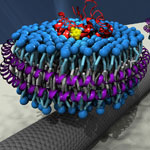 Integrating biological molecules or even complex molecular machines with man-made nanoelectronic devices is one of the ultimate goals of bionanotechnology. Already there is a growing community of researchers interested in this area of bio/nano integration where biological components are interfaced with inorganic nanomaterials to create new devices and systems that combine the desirable properties of each system. One particular nanomaterial used in this kind of research are carbon nanotubes (CNTs). Scientists now report the integration of a CNT transistor with olfactory receptor proteins. The ultimate goal of this type of research is to transfer the sensing properties of biological molecular systems to artificial electronic devices.
Integrating biological molecules or even complex molecular machines with man-made nanoelectronic devices is one of the ultimate goals of bionanotechnology. Already there is a growing community of researchers interested in this area of bio/nano integration where biological components are interfaced with inorganic nanomaterials to create new devices and systems that combine the desirable properties of each system. One particular nanomaterial used in this kind of research are carbon nanotubes (CNTs). Scientists now report the integration of a CNT transistor with olfactory receptor proteins. The ultimate goal of this type of research is to transfer the sensing properties of biological molecular systems to artificial electronic devices.
Jul 21st, 2011
 Early detection of food borne pathogenic bacteria is critical to prevent disease outbreaks and preserve public health. This has led to urgent demands to develop highly efficient strategies for isolating and detecting this microorganism in connection to food safety, medical diagnostics, water quality, and counter-terrorism. Conventional techniques to detect E. coli and other pathogenic bacteria are time-consuming, labor-intensive, and inadequate as they lack the ability to detect bacteria in real time. Thus, there is an urgent need for alternative platforms for the rapid, sensitive, reliable and simple isolation and detection pathogens. Taking a novel approach to isolating pathogenic bacteria from complex clinical, environmental and food samples, researchers have developed a nanomotor strategy that involves the movement of lectin-functionalized microengines. Receptor-functionalized nanoswimmers offer direct and rapid target isolation from raw biological samples without preparatory and washing steps.
Early detection of food borne pathogenic bacteria is critical to prevent disease outbreaks and preserve public health. This has led to urgent demands to develop highly efficient strategies for isolating and detecting this microorganism in connection to food safety, medical diagnostics, water quality, and counter-terrorism. Conventional techniques to detect E. coli and other pathogenic bacteria are time-consuming, labor-intensive, and inadequate as they lack the ability to detect bacteria in real time. Thus, there is an urgent need for alternative platforms for the rapid, sensitive, reliable and simple isolation and detection pathogens. Taking a novel approach to isolating pathogenic bacteria from complex clinical, environmental and food samples, researchers have developed a nanomotor strategy that involves the movement of lectin-functionalized microengines. Receptor-functionalized nanoswimmers offer direct and rapid target isolation from raw biological samples without preparatory and washing steps. 
 Subscribe to our Nanotechnology Spotlight feed
Subscribe to our Nanotechnology Spotlight feed





